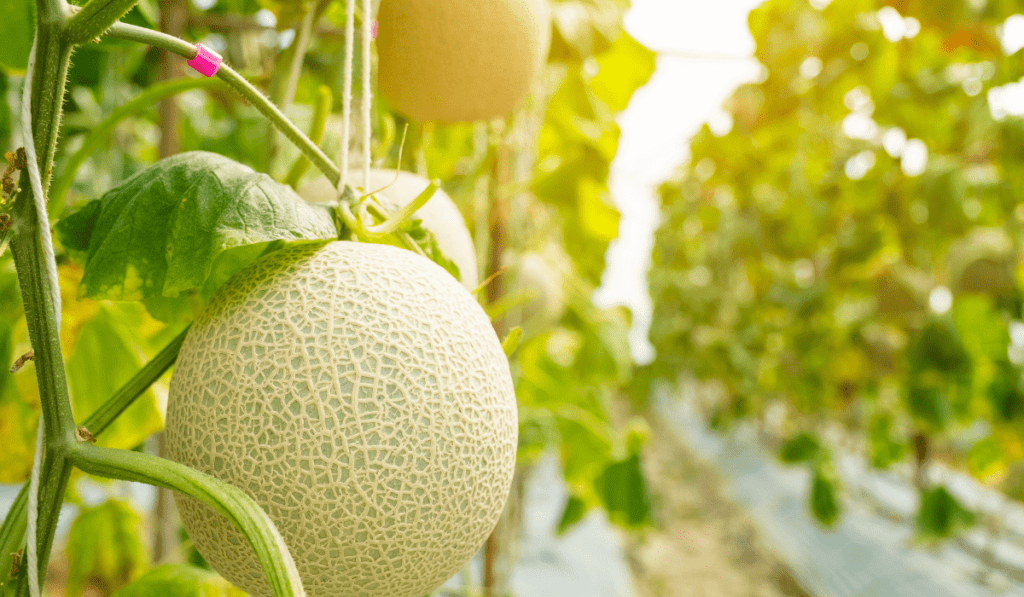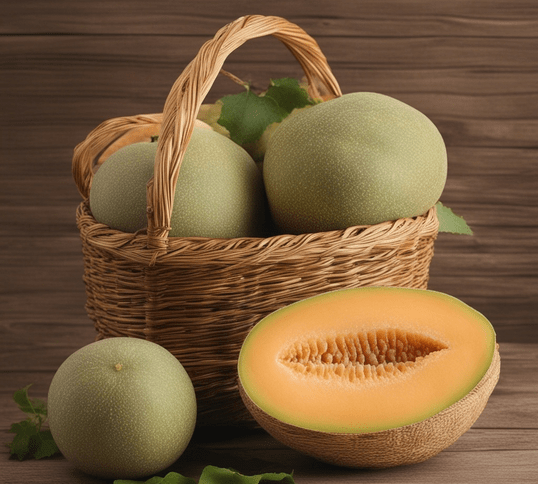Cantaloupes, with their sweet and juicy flesh, are a favorite summer treat for many gardeners. When it comes to growing these delicious melons, one common dilemma arises: should you plant them on the ground or use a trellis? In this comprehensive guide, we’ll explore the pros and cons of both methods to help you make an informed decision for successful cantaloupe cultivation.
Planting Cantaloupe on the Ground
Growing cantaloupes directly on the ground is the traditional method and offers several advantages:
- Ample Space: Cantaloupe vines can spread out freely, utilizing all available space for growth and fruit production.
- Stability: Vines anchored in the soil tend to be more stable and less susceptible to wind damage or falling over.
- Natural Support: The ground provides a natural foundation for the developing fruit, preventing damage from gravity.
- Easy Access: Harvesting ripe cantaloupes is more accessible when they’re at ground level.
- Soil Contact: Direct contact with the soil allows the plant to access nutrients and water more efficiently.
However, there are some downsides to growing cantaloupes on the ground
- Space Requirement: Ground-grown cantaloupes require a significant amount of garden space, which may not be ideal for small gardens.
- Pest and Disease Risk: Contact with the soil can make the plants more susceptible to pests and soil-borne diseases.
- Weed Control: Weeding around sprawling vines can be challenging.
Planting Cantaloupe on a Trellis
Using a trellis for growing cantaloupes is an alternative method that offers its own set of advantages:
- Space-Saving: Vertical growth saves garden space, making it suitable for smaller gardens or raised beds.
- Better Air Circulation: Vines on a trellis enjoy improved air circulation, which can reduce the risk of fungal diseases.
- Pest Control: Elevation can help protect cantaloupes from ground-dwelling pests and soil-borne diseases.
- Cleaner Fruits: Cantaloupes hanging on a trellis are less likely to develop rot or blemishes from contact with the soil.
- Easier Harvest: Ripe fruits are conveniently within arm’s reach, making harvesting more comfortable.
However, there are considerations when growing cantaloupes on a trellis:
- Support Structure: You’ll need to provide a sturdy trellis or support system for the vines to climb.
- Pruning: Proper pruning is necessary to manage vine growth and ensure that the trellis can support the weight of developing fruit.
- Regular Maintenance: Vines may require training to climb the trellis, and the trellis itself needs periodic inspection and maintenance.
Conclusion
Whether to grow cantaloupes on the ground or a trellis ultimately depends on your specific gardening space, goals, and preferences. Ground planting offers a traditional approach with ample space for vines to spread but may be more susceptible to pests and diseases. On the other hand, trellis cultivation saves space, improves air circulation, and can result in cleaner fruits but requires a sturdy support structure and regular maintenance. Consider your garden size, available resources, and willingness to maintain the chosen method when deciding how to grow your cantaloupes. Regardless of your choice, with proper care and attention, you can enjoy a delicious cantaloupe harvest in your garden. Happy gardening!



